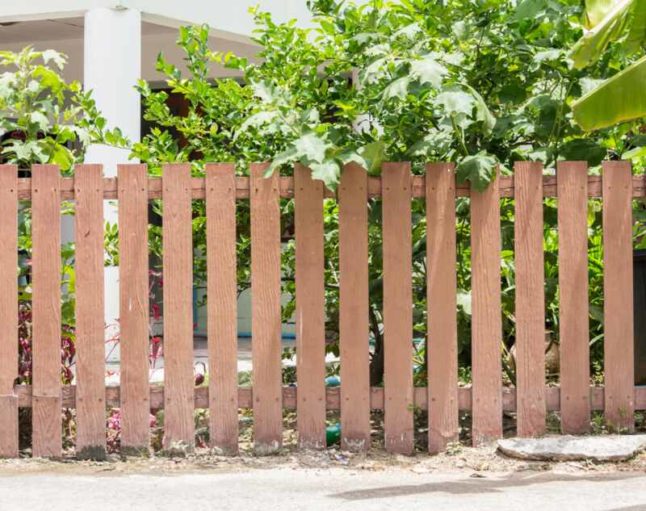All Categories
Featured

Amongst the most preferred options, wood, plastic, and light weight aluminum each offer one-of-a-kind advantages and downsides. Here's a failure of the pros and cons of these three typical secure fencing materials.
Wood Fencing. Timber fence has actually been a timeless option for home owners due to its natural charm and convenience.
Pros:. Aesthetic Appeal: Timber supplies a warm and classic appearance that matches a selection of building styles. Adjustable: It can be painted, stained, or cut into one-of-a-kind styles to fit individual choices. Cost-Effective: Originally, wood fencing can be an inexpensive alternative contrasted to various other materials. Eco-Friendly: Wood is an eco-friendly source and can be sustainably sourced. Cons:. High Maintenance: Wood requires regular securing, staining, or painting to stop rot, insect damage, and weathering. Longevity Issues: Without proper care, timber can warp, fracture, or degeneration over time, specifically in locations with high humidity. Shorter Lifespan: A wood fencing usually lasts 10-20 years, depending upon the sort of wood and degree of upkeep. Wood is optimal for those who value a standard look and agree to devote to its maintenance.
Vinyl Secure Fencing. Plastic is a modern, low-maintenance fencing choice that has actually grown in popularity in the last few years.

Pros:. Reduced Upkeep: Plastic does not call for paint, discoloration, or sealing and can be easily cleaned with soap and water. Weather Resistant: It withstands severe weather without rotting, rusting, or bending. Long-Lasting: Vinyl fencings can last 20-30 years with minimal upkeep. Range of Styles: Offered in lots of shades, designs, and structures, some vinyl options simulate the appearance of timber. Cons:. Greater Upfront Price: Plastic fence can be extra costly originally compared to wood. Brittleness in Cold Climate: In severe cool, vinyl might crack or become brittle. Minimal Services: Individual panels can be hard to change, requiring careful matching to the existing fence. Vinyl is finest fit for house owners seeking a resilient, low-maintenance option with contemporary aesthetic appeals.
Light Weight Aluminum Fencing. Aluminum fence is a sturdy and lightweight option, frequently selected for its contemporary look and convenience.
Pros:. Rust-Resistant: Light weight aluminum does not rust, making it a superb choice for damp or humid climates. Low Upkeep: Requires marginal maintenance and is simple to clean. Sturdy: While lightweight, light weight aluminum is strong enough to endure several ecological problems. Long Life-span: Can last numerous years without significant wear or deterioration. Range of Styles: Provides a smooth and classy appearance, often used for decorative or ornamental functions. Cons:. Greater Expense: The preliminary financial investment for aluminum secure fencing is higher than wood or vinyl. Much Less Personal privacy: Light weight aluminum fences are commonly designed with open pickets, making them much less efficient for privacy. At risk to Damages: Although long lasting, light weight aluminum can be dented by strong effects. Aluminum is suitable for those looking for a trendy, lasting option that needs marginal treatment.
Making the Right Choice. Each fencing material-- plastic, aluminum, and timber-- uses unique benefits and downsides. Your choice should depend upon your details concerns, such as budget plan, maintenance choices, climate, and aesthetic objectives:
Choose timber if you like a typical appearance and do not mind routine maintenance. Choose vinyl if you desire a low-maintenance, weather-resistant fence with modern-day appeal. Select light weight aluminum if you focus on resilience, corrosion resistance, and a smooth layout. By weighing these disadvantages and pros, you can pick a secure fencing product that improves your building while meeting your functional requirements.
Latest Posts
Discover Hyundai's Newest Motivations and Offers in Akron
Published Apr 20, 25
1 min read
Protect Your Home with Rain Gutter Solutions for Illinois Climate
Published Apr 20, 25
2 min read
Change Your Home with Quality Flooring Solutions
Published Apr 19, 25
1 min read